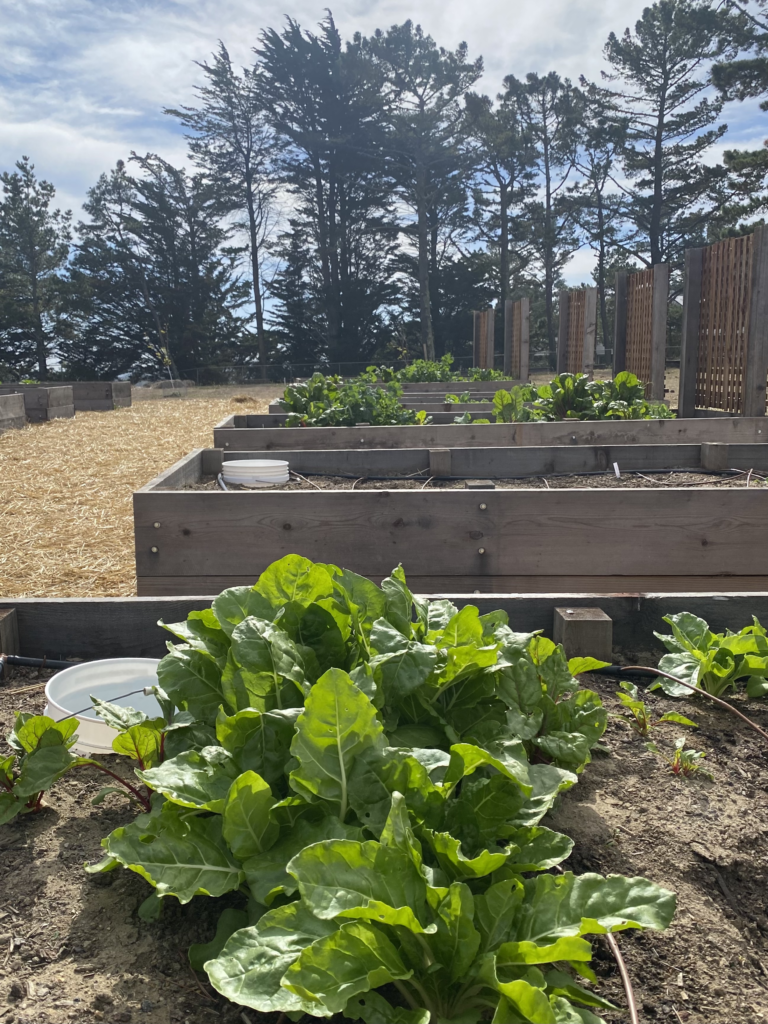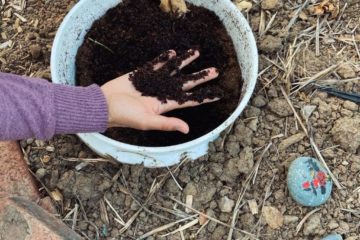Written by Thia Dotson, Communications Intern
What is Permaculture?
Looking for a farming technique that allows you to give back to your health, the health of the environment, and the community while doing so in a sustainable way? Permaculture is your answer. It is the future of farming and uses mutually beneficial synergies to integrate land, resources, people, and the environment, to have zero-waste, like the systems found in most natural environments [6]. It uses a variety of organic and regenerative farming techniques to essentially create a “food forest” that can work at any scale in both rural and urban settings.
Conventional Farming and Permaculture
Although conventional farming has been widely accepted and adopted throughout the world, it poses a serious threat to our health, the health of the environment, food security, the quality of our water, and biodiversity. Soil fertility is also a major issue due to conventional farming that not only affects the growth of crops and farmers’ profits but also contributes to global poverty and malnourishment [4]. As global warming and climate change continue to affect all ecosystems and life negatively, it is crucial that we switch to sustainable farming systems that benefit and protect our environment as we know it.
Permaculture offers a variety of different solutions to the many issues that traditional monoculture and conventional farming create while using harmful pesticides, fertilizers, poor soil management, heavy farming machinery, land clearance, irrigation, and overgrazing [4]. This is due to one of the primary goals in Permaculture which is to focus on minimizing waste and inputs of energy while reaping maximal benefits. Therefore, instead of using such damaging techniques, the article Food & Climate Change: A Permaculture Perspective by Auburn University talks about how Permaculture uses different tactics such as using mulch, compost, little to no-till farming, avoiding artificial fertilizers, ‘chop and drop’, and ‘slow, spread, and sink’ watering (2020). These strategies increase the fertility of the soil, benefitting the ecosystems in the soil, increasing pollinators, and biodiversity, improving crop development and production, which in turn improve the health of the crop, and consumer, which all benefit the farmer/gardeners’ overall success.
EGC and Permaculture
Here at Each Green Corner, our mission is “to educate and assist community members in growing sustainable, permaculture-inspired and culturally-diverse food gardens, and then harvest excess produce for donation to our local non-profit food distribution partners” [3]. By promoting sustainable, permaculture-based urban agriculture, we are empowering people in the community to make changes on a small scale for a collectively significant positive impact on food security as well as public and environmental health.
Some permaculture tactics we use on our garden sites include incorporating as much plant diversity and companion planting as we can, using mulch, compost, and other permaculture practices such as Hügelkultur garden beds, and creating more sustainable spaces.

Hügelkultur Garden Beds at our Portola Site. (October, 2023. Photo Taken by EGC Food Systems Educator, Milena)
Permaculture Tactics for Gardening in the Winter
Although during Winter it can be difficult to garden and harvest certain crops, there are still many permaculture tactics that can be beneficial, to make sure your garden is ready when spring and summer roll around. Here are just a few that the articles Keep Winter Gardens Working with Permaculture Strategies by Rowell and Stay Busy with Winter Permaculture by Bogdanowicz mention:
-Important not to leave the soil bare. Cover it with mulch or manure so that it protects it, and keeps it moist and full of nutrients.
-Trim the dead plants, crops, and trees, and use those trimmings as mulch, or firewood. Make sure to keep the balance of light needs for certain crops in mind when trimming.
-Create heat traps by using rocks around crops or burying them underground (the darker, the more heat will be attracted). Creating a U shape of rocks around certain plants will help to absorb heat and water as well! Make sure the opening of the U is facing the south!
-Prep for new Hügelkultur garden beds (an area for a raised bed, using woody material that can be partially rotted, topped with compost and soil). Create a section and top it with mulch so that it is protected and ready to go when spring comes around.
-If you have chickens or livestock, you can also have them run around your garden to get rid of any unwanted small pests, and you can scatter their manure or droppings with mulch to further nourish the soil and keep it moist/fertile.
-Plan for spring/summer and organize seeds + write down tips or crops that worked for you or didn’t. Planting Nitrogen-fixing plants or pollinator plants is always a good idea.
-Rotate seasonal plants/crops so that you have at least two years between planting the same crop in the same space to improve nutrients in the soil, get rid of plant diseases and insect buildup.
Conclusion
Every day we have the power to help give back to our environment whether we do so by educating ourselves, and others, making sustainable choices, or adopting organic beneficial farming techniques such as permaculture in our home/school/community gardens or farms. Even though it may seem like a small shift, it makes all the difference, and if we all work together we can help to protect our world so that all future generations can thrive.
Sources
[1] Admin. (2020, February 26). Food & Climate Change: A Permaculture Perspective. Office of Sustainability. https://sustain.auburn.edu/food-climate-change-a-permaculture-perspective/
[2] Bogdanowicz, R. (2017, January 10). Stay Busy with Winter Permaculture. The Permaculture Research Institute. https://www.permaculturenews.org/2017/01/11/stay-busy-winter-permaculture/
[3] Each Green Corner. (2023, July 26). https://www.eachgreencorner.org/about-us/
[4] Rhodes, C. J. (2012). Feeding and healing the world: Through regenerative agriculture and permaculture. Science Progress, 95(4), 345–446. https://doi.org/10.3184/003685012×13504990668392
[5] Rowell, L. C., & Sundberg, M. (2014, November 17). Keep Winter Gardens Working with Permaculture Strategies. Ecological Landscape Alliance. https://www.ecolandscaping.org/11/designing-ecological-landscapes/permaculture-edible-gardens/keep-winter-gardens-working-with-permaculture-strategies/
[6] What is Permaculture ?. The Permaculture Research Institute. (2023). https://www.permaculturenews.org/what-is-permaculture/



0 Comments